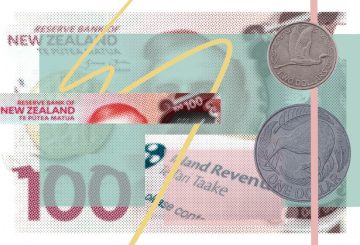Sinusuportahan ni Mayor Tory Whanau ang ideya ng pagpapakilala ng mga rate para sa bakanteng lupa sa sentro ng lungsod. Bumoto ang Wellington City Council upang mapanatili ang kasalukuyang mga rate para sa mga negosyo, na maaaring nangangahulugan na ang inaasahang pagtaas ng mga rate para sa mga residente ay maaaring hindi kasing mataas tulad ng naisip dati.
Sa isang pagpupulong ng Long Term Plan and Finance Committee, ginawa ang mga paunang desisyon tungkol sa mga bagong rate at pagbabago sa patakaran sa rate pagpapatawad ng konseho. Ang isang panukala upang mabawasan ang pagkakaiba ng mga komersyal na rate mula $3.7 hanggang $3.25 ay nagdulot ng mainit na talakayan. Itinatampok ni Conseller Tony Randle na ang mga negosyo sa labas ng gitnang distrito ng negosyo ay nahihirapan sa mataas na rate ng komersyal.
Ipinahayag ni Counseler Ray Chung ang kanyang suporta para sa mga negosyo, ngunit itinuro din na ang pagbabago ng mga rate ay hindi magkakaroon ng pagkakaiba sa kanya dahil ang magkakaupa ang magbabayad para dito. Binanggit niya ang kanyang kakulangan sa ginhawa sa ideya ng mga tirahan ratepayer na magbayad ng higit pa upang suportahan ang pagbabagong ito.
Iminungkahi ni Counseler Ben McNulty na magbibigay ng suporta ang bagong gobyerno sa mga negosyo sa ibang paraan, tulad ng pag-aalis ng Fair Pay Agreements at hindi pagtaas ng mga buwis sa gasolina. Nagtalo niya na ang mga hakbang na ito ay magiging mas makabuluhan sa komunidad ng negosyo.
Kalaunan ay bumoto ang komite laban sa pagbaba ng pagkakaiba-iba ng mga rate ng komersyal. Gayunpaman, inaprubahan nila ang lahat ng iba pang mga pagbabago, kabilang ang pagpapakilala ng mga rate para sa bakanteng lupa sa sentro ng lungsod. Nagmungkahi ng Mayor Tory Whanau ang isang pagbabago upang madagdagan ang pagkakaiba sa $5 sa pangkalahatang rate para sa bawat $1 na binabayaran ng isang tirahan na ari-arian ng parehong halaga.
Nagpasya rin ang konseho na maantalin ang mga rate para sa ilang mga gusaling tirahan na may dahilan sa lindol hanggang sa mapalakas ang mga ito. Ang pagpapalipas na ito ay magagamit hanggang sa tatlong taon bago isinasagawa ang gawaing pagpapalakas.
Ang mga desisyon na ginawa sa panahon ng pagpupulong ay gagamitin upang gabayan ang karagdagang gawain sa mga rate sa loob ng 2024-34 Long Term Plan ng konseho. Ang pormal na konsultasyon sa draft na Pangmatagalang Plano ay magaganap sa Abril 2024, at ang anumang mga pagbabago sa mga rate ay ipatupad mula Hulyo 2024.




























































